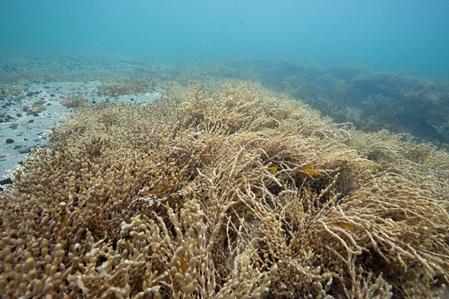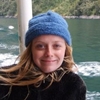General Description
Branched chains of beads (vesicles) varying in shape from round to oval depending on habitat. Beads appear spotted/bumpy (conceptacles). Several simple or branched stalks can arise from a simple disc-like holdfast. Tan to dark brown. Up to 30 cm long (thallus).
Biology
This alga can form large mats on rock platforms and is the only persistent intertidal canopy-forming algal species in Victoria. The canopy forms important habitat for intertidal invertebrates and other algae such as gastropods, crustaceans, delicate red algae. It is very slow growing and is easily broken by human trampling and wild storms which reduces its habitat quality. No animals are known to graze on Hormosira, possibly because it contains chemicals in its cells that are thought to taste bad. Colonies are thought to mainly reproduce vegetatively, though individuals can also reproduce by releasing sperm or eggs into the water during low tide which meet and grow into new individuals.
Habitat
Intertidal rocky reefs and shallow subtidal reefs, to depth of 1 m.
Reefs
Coastal shores
Distribution guide
New Zealand and southern Australia.
Species Group
Seaweeds and seagrasses › Brown algae
Depth
Shore (0-1 m)
Shallow (1-30 m)
Water Column
Max Size
30 cm
Diet
Photosynthetic - sunlight
Commercial Species
No
Global Dispersal
Recorded in Australia
Identify
Conservation Status
- DSE Advisory List : Not listed
- EPBC Act 1999 : Not listed
- IUCN Red List : Not listed







